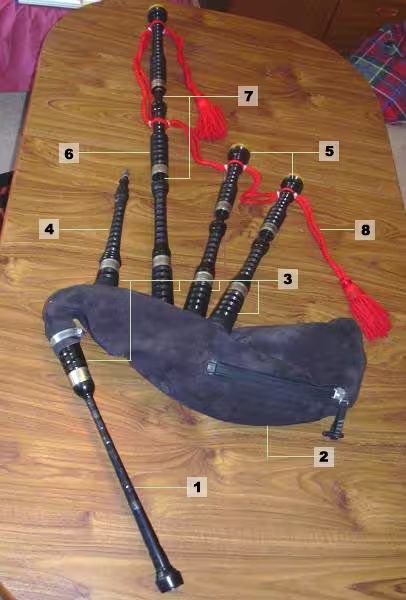Understanding Bagpipe Anatomy
Let's be honest: the first time you look at a full set of Great Highland Bagpipes, it looks a bit like an octopus wearing a sweater. It’s intimidating! You have sticks pointing in every direction, a bag that looks slippery, and ropes tying it all together.
But don't worry. Once you break it down piece by piece, it’s actually a very logical instrument. Before you try to make a sound, you need to know what you are holding.
Tap on the numbers in the image below to see what each part does.

The Hidden Anatomy: What’s Inside?
You can't judge a book by its cover, and you can't play a bagpipe without the parts hiding inside the stocks. If you pull the pipes out of the bag (gently!), you will find the things that actually make the noise: the reeds.
- The Chanter Reed: This looks a bit like an oboe reed. It is made of two pieces of cane tied together. It is very finicky and fragile, but it gives the bagpipe its loud, piercing volume.
- The Drone Reeds: These hide inside the bottom of the three drone pipes. Historically they were made of cane, but today most beginners use synthetic materials because they are much steadier and easier to manage.
Why Does It Look Like That?
You might notice the bag is usually covered in velvet or tartan, with wool cords connecting the pipes. This isn't just to look fancy for a parade.
The Bag Cover stops the rubber or leather bag from slipping around under your arm. It provides friction so you can control the instrument. The Cords keep the drones stable so they don't flop over your shoulder while you are marching. It is a design that has been perfected over hundreds of years.
If you want a really in-depth detail of the physics and history, you can also check out the bagpipes page of this encyclopedia site.